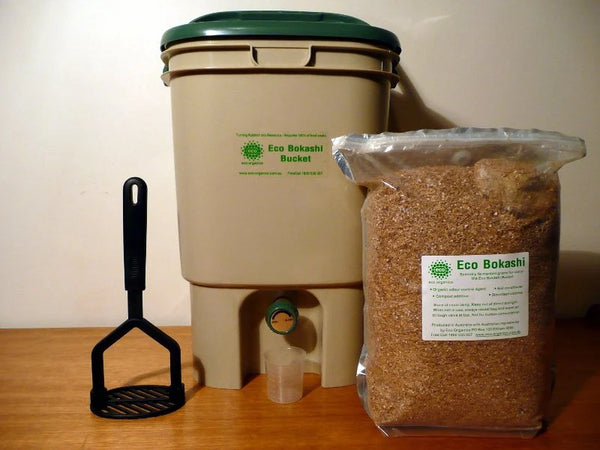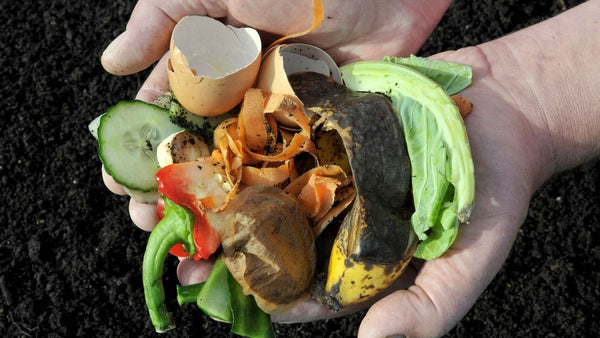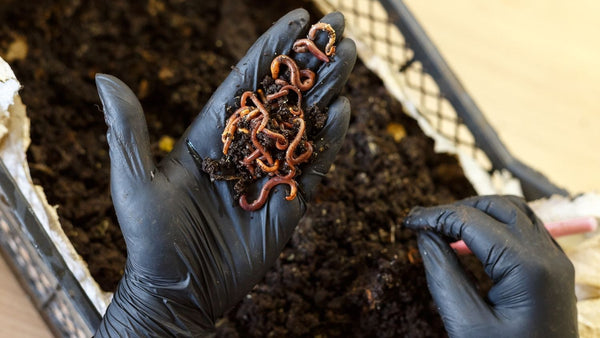Garbage disposals aren’t always suitable for homes with older pipes or for those who live on septic. In this article, we’ll show how to live without a garbage disposal. For those without access to this modern convenience, there are effective alternatives that not only reduce environmental impact but also simplify everyday routines. Let's explore these methods and find a solution that fits seamlessly into your lifestyle.
If you aren’t able to use a garbage disposal due to septic living or plumbing concerns, here’s how to live without a garbage disposal:
- Sepura (Composting Garbage Disposal)
- Bokashi Bin
- Sink Strainer
- Outdoor Composting
- Vermicomposting
- The Drain Strainer
Each of these options helps you live without a garbage disposal in unique ways. Sepura, for example, is effectively a direct replacement for garbage disposals and will keep food out of your plumbing or septic system. Let’s look a little deeper into these food disposal alternatives and see which works best for your lifestyle.
Sepura: Streamlined Waste Management
Sepura is a high-tech garbage disposal replacement that redefines kitchen waste management. With Sepura, you can scrape your plate into the sink, press a wireless button, and let it do the rest. Liquids flow down the drain, while solids are collected in a bin. Sepura's advanced features make it a septic-friendly, odor-free, and clog-free solution.
|
Features |
Sepura |
Traditional Garbage Disposal |
|
Septic-Friendly |
✔ No food enters pipes or septic tank |
✖ Can strain septic systems |
|
Odor-Free |
✔ Carbon filter and controlled air intakes |
✖ Can emit foul odors |
|
Clog-Free |
✔ Sends 99.9% of food scraps to compost bin |
✖ Risk of jams and blockages |
|
Quiet Operation |
✔ Whisper-quiet auger separation |
✖ Can be noisy and disruptive |
|
Accepts Various Food Scraps |
✔ Handles peels, bones, rice, and more |
✖ Limited in what it can process |
Bokashi Bin: A Fermentation Solution
The Bokashi bin is a compact indoor composting system that ferments organic waste, including cooked food, meat, and dairy. It's septic-friendly and emits a minimal odor, making it a suitable alternative to a garbage disposal.
See a full guide to bokashi composting for beginners here.
How it works: Place your food scraps, except for large bones and excessive liquids, into the Bokashi bin. Sprinkle a layer of Bokashi bran, a microbial additive, to accelerate the fermentation process.

Source: Compost Magazine
Sink Strainer: Preventing Drain Clogs
A sink strainer is a cost-effective device that prevents food scraps from entering your drain. It’s particularly useful for those wary of reaching into a disposal unit.
How it works: Install a sink strainer in your kitchen sink. Empty it regularly to avoid clogs and maintain efficient water drainage.

Outdoor Composting: Embracing Nature's Cycle
Transform your kitchen scraps and yard waste into nutrient-rich compost for your garden. This method is eco-friendly and requires minimal equipment. Before sending your food waste to a compost pile, check out 13 surprising ways to repurpose food scraps!
How it works: Designate a composting area in your yard. Mix kitchen scraps with yard waste, and turn the pile periodically to aerate it.

Vermicomposting: Harnessing Nature's Workers
Vermicomposting employs special composting worms to break down organic waste. It's an efficient method that yields nutrient-rich vermicompost, perfect for enriching soil.
How it works: Set up a bin with proper bedding, food scraps, and red wiggler worms. The worms will do the work of breaking down the waste.

The Drain Strainer: A Commercial Solution
While primarily designed for commercial use, The Drain Strainer efficiently captures food waste in high-traffic environments. It’s an excellent option for businesses seeking to prevent drain clogs.
How it works: Install The Drain Strainer in your business's sink. Empty it regularly to ensure smooth water flow.
Living Sustainably Without a Garbage Disposal
Navigating life without a garbage disposal doesn’t have to be a hassle. By adopting one of these alternatives, you not only reduce your environmental footprint but also simplify your daily routine. Consider incorporating one of these methods into your kitchen, and enjoy a greener, cleaner way of living.


